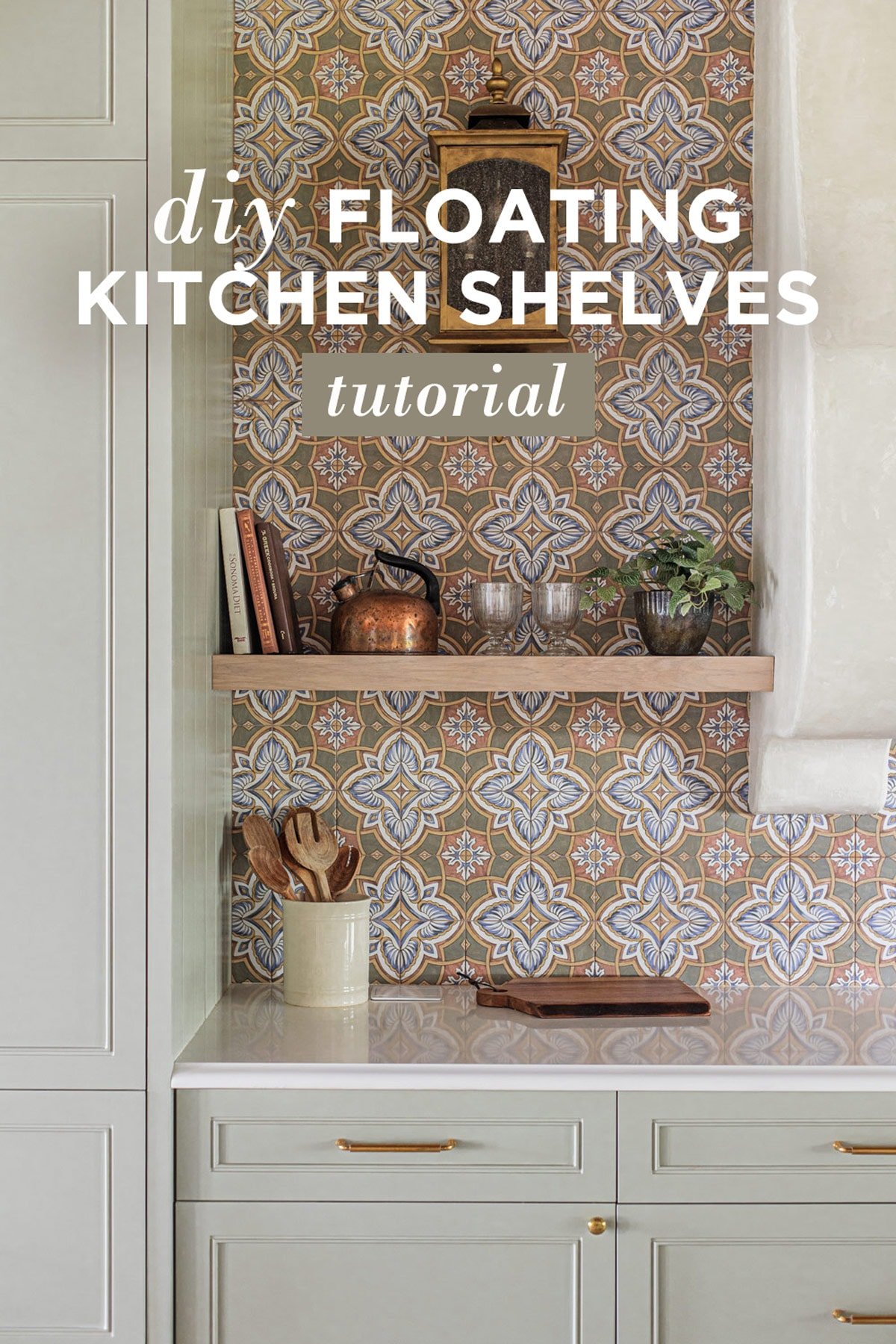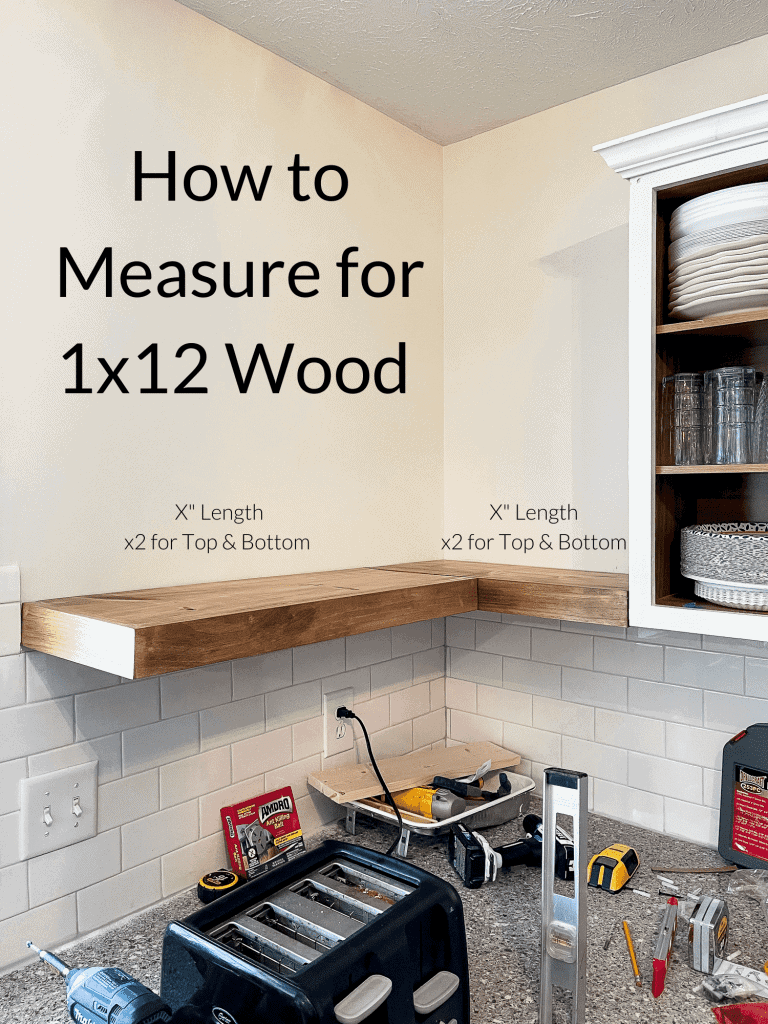Kitchen floating shelves should be 10 to 12 inches deep. This depth accommodates most kitchen items comfortably.
Floating shelves in the kitchen provide both functionality and aesthetic appeal. They offer easy access to frequently used items and can make your kitchen feel more open. Choosing the right depth is crucial to ensure they are practical and visually pleasing.
Shelves that are too shallow may not hold larger items securely, while overly deep shelves could look bulky and take up unnecessary space. Opting for a depth of 10 to 12 inches strikes the perfect balance. This size is ideal for storing dishes, glasses, and small appliances, keeping your kitchen organized and stylish.
Introduction To Kitchen Aesthetics
Creating a beautiful kitchen involves more than just appliances. The layout, colors, and fixtures all play a role. One aspect that stands out is the use of floating shelves. These shelves can transform your kitchen’s look. They add both style and function to your space.
The Role Of Floating Shelves
Floating shelves serve many purposes in a kitchen. They offer extra storage without taking up floor space. You can display your favorite dishes, spices, or cookbooks. They also make the kitchen appear more open and airy. This helps in creating a modern and sleek look.
Balancing Function And Style
The depth of floating shelves is crucial. Shelves that are too deep can look bulky. Shelves that are too shallow might not hold much. The ideal depth often ranges between 10 to 12 inches. This depth is perfect for holding plates, bowls, and glasses. It also maintains a clean and balanced look.
Consider these points when choosing the depth:
- What items will you place on the shelves?
- How much wall space do you have?
- Do you prefer a minimal or busy look?
| Item | Recommended Shelf Depth |
|---|---|
| Plates | 10-12 inches |
| Bowls | 10-12 inches |
| Glasses | 8-10 inches |
| Spices | 6-8 inches |
Choose the right depth to match your kitchen needs. This ensures a balanced and functional space. Floating shelves can make your kitchen both beautiful and practical.
Standard Shelf Depth
When installing kitchen floating shelves, knowing the standard shelf depth is crucial. The depth of your shelves impacts both functionality and aesthetics. It ensures you get the most out of your space while keeping your kitchen organized and stylish.
Common Dimensions
The standard depth for kitchen floating shelves varies. Here’s a quick overview:
- 8-10 inches: Ideal for storing small items like spices and mugs.
- 10-12 inches: Suitable for plates, bowls, and small appliances.
- 12-14 inches: Great for larger items like serving dishes and cookbooks.
Pros And Cons
Choosing the right shelf depth has its pros and cons. Here’s a breakdown:
| Depth | Pros | Cons |
|---|---|---|
| 8-10 inches |
|
|
| 10-12 inches |
|
|
| 12-14 inches |
|
|
Assessing Your Needs
Choosing the right depth for your kitchen floating shelves is crucial. It ensures both functionality and aesthetics. To make an informed decision, you need to assess your specific needs. Two key factors to consider are Inventory Analysis and Space Utilization.
Inventory Analysis
Start by evaluating what you plan to store on the shelves. Make a list of items such as:
- Plates and bowls
- Glasses and cups
- Spice jars and condiments
- Cookbooks
Measure the depth of these items. Ensure that your shelves are deep enough to hold them securely. Here’s a simple table to help:
| Item | Average Depth (inches) |
|---|---|
| Plates | 8-10 |
| Bowls | 6-8 |
| Glasses | 4-5 |
| Cookbooks | 9-11 |
Space Utilization
Next, consider the available wall space in your kitchen. Measure the width and height of the area where you plan to install the shelves. Here are some tips:
- Ensure there’s enough room above and below the shelves.
- Leave space for larger items you might add later.
- Avoid overcrowding to keep a clean look.
Think about how often you use the items. Frequently used items should be on lower, more accessible shelves. Less frequently used items can be higher up.
By thoroughly assessing your needs through Inventory Analysis and Space Utilization, you can determine the perfect depth for your kitchen floating shelves. This ensures a practical and visually pleasing setup.

Credit: www.jennasuedesign.com
Material Considerations
Choosing the right materials for your kitchen floating shelves is crucial. The material affects both the aesthetics and functionality. Different materials offer unique benefits and drawbacks.
Wood Vs. Metal
Wood is a classic choice for kitchen shelves. It offers a warm and traditional look. Wood is versatile and can be painted or stained to match your kitchen decor. Common types of wood used are oak, pine, and maple.
Metal shelves offer a modern and industrial feel. They are usually more durable than wood. Metal shelves can handle heavier loads. Common types of metal used are stainless steel and aluminum.
Here’s a quick comparison:
| Material | Pros | Cons |
|---|---|---|
| Wood |
|
|
| Metal |
|
|
Weight Capacity
The weight capacity of your kitchen floating shelves is a key factor. It determines what you can safely store. Wood shelves generally have a lower weight capacity compared to metal. For example, a standard wood shelf can hold around 20-30 pounds. Metal shelves can hold up to 50 pounds or more.
Always check the manufacturer’s guidelines for weight limits. Overloading shelves can lead to damage or accidents. Use wall anchors and brackets to increase weight capacity. Here’s a quick guide:
- Determine what you will store on the shelves.
- Choose the material based on weight capacity needs.
- Install shelves with appropriate supports.
By following these tips, you can ensure your kitchen floating shelves are both stylish and functional.
Design Harmony
Design harmony is crucial in creating a visually pleasing kitchen. Kitchen floating shelves add both function and style. Ensuring they blend well with the overall design is important.
Matching Decor
Matching decor with your floating shelves is essential. Choose materials that complement your kitchen’s existing elements. For instance, wooden shelves can harmonize with rustic themes. Metal shelves fit well in modern kitchens.
Consider the color scheme. White shelves work in bright kitchens. Dark shelves can add contrast in lighter spaces. Aim to create a seamless look.
Shelf Placement
Shelf placement affects both aesthetics and functionality. Proper placement ensures ease of access and visual balance.
- Position shelves at eye level for convenience.
- Keep a uniform gap between shelves for symmetry.
- Avoid placing shelves near heat sources.
Consider the depth of the shelves too. Standard depths range from 10 to 12 inches. This depth allows ample storage without overcrowding the space.
| Kitchen Style | Shelf Material | Color Scheme |
|---|---|---|
| Rustic | Wood | Earth Tones |
| Modern | Metal | Neutral Colors |
| Classic | Glass | White or Light Colors |
By considering these aspects, you ensure that your floating shelves enhance the design harmony of your kitchen.

Credit: www.allisajacobs.com
Customization Options
Customization options for kitchen floating shelves provide flexibility and personalization. With various choices, you can create shelves that fit your space perfectly. Here, we’ll explore two main approaches: DIY custom shelves and professional tailoring.
Diy Custom Shelves
DIY custom shelves let you design and build your own shelves. This approach gives you complete control over the depth and style. You can use different materials like wood, metal, or glass.
- Wood: Classic and versatile, wood can be stained or painted.
- Metal: Sleek and modern, metal shelves add a contemporary touch.
- Glass: Elegant and light, glass shelves provide a clean look.
To ensure your shelves are sturdy, you must measure and cut carefully. Use a level to make sure the shelves are straight. Secure the brackets firmly to support the weight of items.
Professional Tailoring
Professional tailoring involves hiring experts to design and install your shelves. This ensures a perfect fit and high-quality craftsmanship.
Professionals can offer advice on the best materials and finishes. They can also recommend the ideal depth based on your needs.
| Feature | DIY Custom Shelves | Professional Tailoring |
|---|---|---|
| Control | High | Moderate |
| Cost | Lower | Higher |
| Quality | Varies | Consistent |
Choosing between DIY and professional options depends on your budget and skill level. Both methods offer unique benefits and can enhance your kitchen’s functionality and style.
Installation Tips
Installing kitchen floating shelves can be tricky. Proper installation ensures stability and safety. Here are some tips to make your installation process smooth and efficient.
Secure Mounting
Ensure the shelves are securely mounted to the wall. Use wall studs to provide strong support. If wall studs are not available, use heavy-duty wall anchors. Follow these steps for secure mounting:
- Locate the wall studs using a stud finder.
- Mark the positions on the wall.
- Drill pilot holes at the marked positions.
- Attach the mounting brackets using screws.
- Place the shelf on the brackets and secure it.
Leveling Shelves
Proper leveling is crucial for both aesthetics and functionality. Use a spirit level to ensure shelves are straight. Follow these steps for accurate leveling:
- Mark the desired height on the wall using a pencil.
- Place the spirit level on the marked line.
- Adjust the line until the bubble is centered.
- Drill holes along the leveled line.
- Mount the brackets and check the level again.
| Tool | Purpose |
|---|---|
| Stud Finder | Locate wall studs |
| Drill | Make pilot holes |
| Spirit Level | Ensure shelves are straight |
| Screwdriver | Secure screws |
| Measuring Tape | Measure accurate positions |

Credit: graceinmyspace.com
Maintenance And Upkeep
Proper maintenance and upkeep of kitchen floating shelves are essential. They keep your shelves looking their best. They also ensure their longevity. Below, we will explore effective ways to clean and maintain your shelves.
Cleaning Techniques
Regular cleaning keeps your shelves spotless. Follow these simple steps:
- Dust the shelves weekly using a microfiber cloth.
- Use a mild soap solution for sticky spots.
- Wipe with a damp cloth. Ensure no soap residue remains.
- Dry the shelves completely to prevent water damage.
For wooden shelves, apply a wood cleaner monthly. This will protect the finish and keep the wood looking fresh.
Longevity Practices
Practicing good habits will extend the life of your kitchen floating shelves:
- Avoid overloading the shelves. Check the weight limit specified by the manufacturer.
- Keep the shelves dry. Wipe any spills immediately to prevent water damage.
- Use shelf liners to protect the surface from scratches and stains.
- Check the brackets and screws regularly. Tighten them if they become loose.
These simple steps will keep your shelves sturdy and long-lasting. Proper care ensures your kitchen remains stylish and functional.
Frequently Asked Questions
How Deep Should Kitchen Floating Shelves Be As Deep As Cabinets?
No, floating shelves do not need to be as deep as cabinets. Shelves usually range from 10 to 12 inches deep.
How Deep Do You Make Floating Shelves?
Floating shelves are typically 10 to 12 inches deep. This depth supports most items and maintains stability. Ensure they match your space and needs.
What Is The Minimum Depth For Kitchen Shelves?
The minimum depth for kitchen shelves is 12 inches. This ensures enough space for standard dinner plates and kitchen items.
How High To Hang Floating Shelves In A Kitchen?
Hang floating shelves 18-24 inches above the countertop. This height balances functionality and aesthetics in the kitchen.
Conclusion
Choosing the right depth for kitchen floating shelves is crucial. It ensures both functionality and aesthetics. Typically, 10 to 12 inches is ideal. Measure your space and consider your storage needs. Well-chosen shelf depth can enhance your kitchen’s look and efficiency.
Make your kitchen both beautiful and practical with the right floating shelves.

